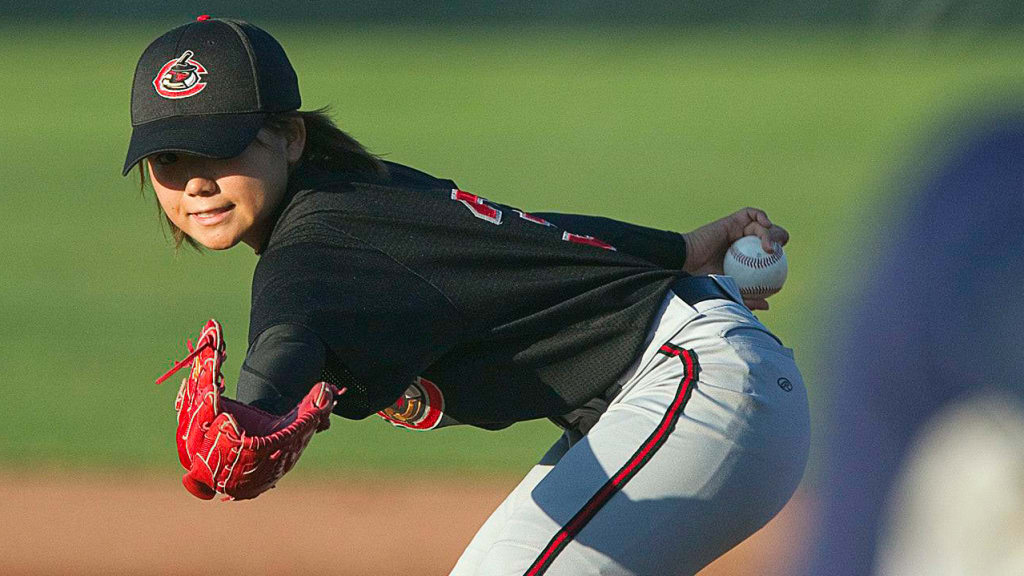
The “Knuckle Princess” is still pursuing her baseball dream -- and breaking barriers -- on multiple continents.
Eri Yoshida, who became the first female professional baseball player in her native Japan at the age of 16 and later played professionally in the United States, will return to the U.S. to play in New York’s independent Empire Professional Baseball League in June, according to a report from Yahoo! Japan.
The knuckleball, which helped Yoshida become a pioneer for female baseball players across the globe, remains at the center of the 31-year-old’s baseball journey. That journey began more than 15 years ago when she saw a video of then-Red Sox knuckleballer Tim Wakefield and was inspired to learn baseball’s most unique pitch. Unlike the majority of knuckleball pitchers, Yoshida throws hers sidearm.
Yoshida, then a high schooler, was drafted by the Kobe 9 Cruise of the Kansai Independent Baseball League before the league’s inaugural season. She made her debut on March 26, 2009, in front of 11,592 fans at the Osaka Dome, facing two batters and striking out one.
In 2010, Yoshida signed a contract with the Chico Outlaws of the independent Golden Baseball League based in California and became the first woman to play baseball professionally on two continents -- an occasion that is marked by a display at the National Baseball Hall of Fame. She was just 18 years old at the time.
After battling a multitude of injuries, Yoshida took a coaching job with the Agekke Corporation's women's baseball team in 2017, but the desire to play never left her.
“I wanted to continue coaching, but there was something in me that felt incomplete,” Yoshida told Yahoo! Japan. “In order to teach children the joys of playing baseball, I needed to see it through. If I didn’t try, I probably would’ve regretted it.
"Considering my age, I started to think more often about whether I should continue playing. I’m not even sure, personally, what I should do. But even as I continued to get injured, I couldn’t bring myself to quit baseball. I realized I still wanted to challenge my knuckleball. Not just in Japan, but overseas.”
